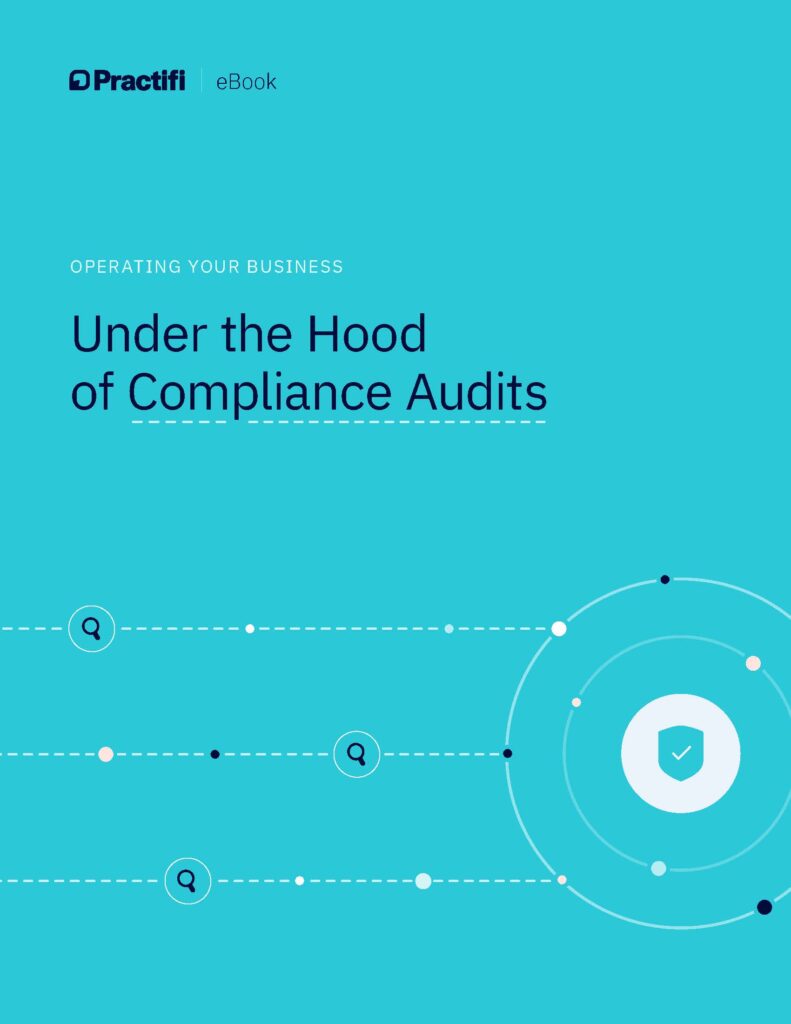
7 Steps to Designing Successful Workflows

By Adrian J.
chief executive officer, practifi
Workflows have become a common word in the advisor world. The term gets tossed around the industry a lot, but what exactly does it mean? And more importantly, how does one go about creating successful advisor workflows?
What are workflows?
Well, at the most general level, a workflow is made up of a sequence of actions and tasks through which a piece of work starts and finishes. For financial advisors, it refers to all the repeatable processes and procedures that help you serve your clients and run your firm. These can cover everything from finance, marketing, compliance all the way to clients. Prospecting emails, client onboarding and proposal generation are just a few workflow examples. In the past, many advisors completed these based on memory or loose documents, but what happens when the advisor retires or if someone misplaces these documents?
Properly documenting procedures can be time consuming. However, spending the time and energy upfront can save you a lot more time in the long run. Keep in mind that creating, documenting, and maintaining these workflows aren’t just for you—they’re crucial to your firm and your clients’ success. Every minute you spend planning now will better set up you up for success in the future.
How to Design Successful Advisor Workflows
It’s important to know that workflows aren’t about passing actions and tasks from one person to another. Creating successful advisor workflows requires thoughtfulness and a little bit more time than you think. Even something as simple as a client address change can get complicated. You may need to verify the change, alert others at your firm about it, file paperwork, update mailing lists, and the list of triggered actions can go on. But no matter what workflow you’re trying to design, here’s how you can approach the development process in order to create successful advisor workflows:
1. Answer the question: “What exactly are we building here?”
Be specific, realistic, and clear about what you want the workflow to do. Before your firm starts creating one, everyone should be on the same page. This seems obvious, but establishing a clear objective helps focus the creation process.
2. Identify all the stakeholders.
Think about who might need the information and process what they may need it for. It’s not just the people doing the work and carrying out the process, but there could be managers, coordinators, or analysts who need to be aware of what’s going on or need information from certains steps in the process.
3. Brainstorm all the possible steps in the process.
Once you have your group from the previous step, work together to come up with all the steps and things that could be involved in the process and write them down. No need to list all the steps in order or get all fancy—the purpose of this exercise is to get the creative juices flowing. You can use a whiteboard, sticky notes, or even software to capture everyone’s thoughts. All that matters is that you and your stakeholders can see all the steps together.
4. Organize these steps.
As a group, work to identify who’s responsible for each step. Is a certain part of the process the responsibility of the advisor or the assistant? After assigning these steps, group any that you think should be together. Then, put them all in an order that makes sense for the firm.
5. Discuss the current process and identify what’s working and what’s not.
After organizing the steps, you should talk as a group about the current workflow. Have an open discussion about what parts of it are helpful and what parts are hampering the process. And although you might want to do this earlier in this design process, it’s important to do this after brainstorming. Doing it beforehand can squash any creativity in the brainstorming process.
6. Get your new workflow in the system and test it.
If you’re using a CRM or some sort of business management software, then you should try to test this workflow within a testing area—this could be a test account, sample client, sample household, etc. Using your sample clients to work through this newly designed procedure will help you identify any missing or extra steps and further fine tune your new workflow.
7. Implement your new advisor workflow and keep an eye on it.
Once your workflow is live and using real clients, you should have a point person to monitor the steps and note any changes that need to be made. Ideally, one person in your firm should be responsible for this new advisor workflow, and perhaps even all your workflows. He or she can centralize all the feedback. Additionally, there’d be no question as to who’s watching over and maintaining these processes.
The Key to Success
Looking at all the steps, the main takeaway for designing successful advisor workflows is to use an open approach to the creation process. Opening this process up to more people and to creative brainstorming helps you and your firm see this workflow from multiple angles. This way you can design the workflow that works best for everyone. Following these steps each time you create a workflow not only ensures consistency, but also ensures consistent success. And lastly, as a general tip, your firm should try to conduct workflow reviews once a year to make sure these workflows remain successful.
Interested in learning more about Practifi’s workflow capabilities?
Did you know that Practifi comes fully charged with ready-to-use workflows? This means you can get a head start streamlining your complex processes. Book a time with a member of our team to learn more.
Love our posts? Don’t forget to subscribe!
This post was inspired by conversations with Erin Kincheloe, industry expert and founder of All About It Consulting.








